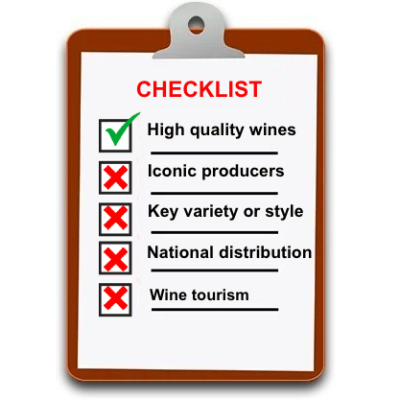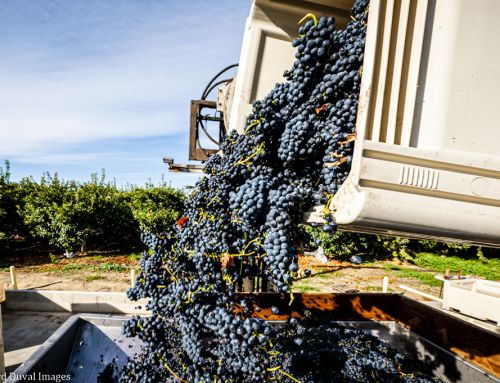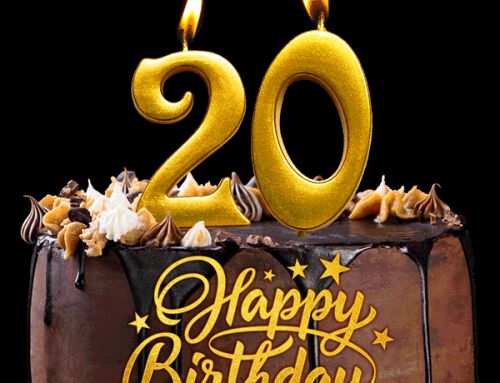 This is part 2 of a series of articles about appellations. Read part 1.
This is part 2 of a series of articles about appellations. Read part 1.
In my series “The Good, The Bad, and The Ugly” of Washington wine, I wrote that too few appellations in the state have distinguished themselves in the eyes of consumers. (Note: This is different than Washington having too many appellations.) Why is this?
It’s directly related to what appellations need to do to gain widespread consumer awareness that I wrote about recently. Let’s look at the criteria I listed.
1. Some appellations in Washington have shown that they can consistently produce high quality, unique wines. Some have not to date.
The first and most important bar to meet is showing that an appellation produces high quality, unique wines. Some appellations in Washington have done this. Others have not and are still in their early stages.
Meeting this bar requires the right producers exploring the right varieties in the right places. It also takes time, educated guesses, and, sometimes, a little luck.
Note that it is by no means enough to just create high quality wines. They also have to be distinctive in some fashion and, ideally, in a way that people can easily explain and understand.
2. Too few Washington appellations have “iconic” producers.
One of the ways appellations rise to prominence is through “iconic” producers. These are wineries working at a very high level that distinguish themselves in the eyes of consumers, trade, and media with their wines. They are the producers that help put the appellation on the map.
Many appellations in Washington do not (yet) have iconic producers associated with them. Note that this is both a challenge and an opportunity. The appellations that do have iconic producers is part of the reason that these places are better known.
3. Too few Washington appellations have identified a key variety or style that can be promoted nationally.
It’s not a problem that Washington doesn’t have a so-called “signature variety” or style. The state will never be defined by a single variety, as it is too large and does too many things well.
But it is a problem that not enough appellations have identified a single variety or style to promote broadly. That greatly hampers raising awareness, as it complicates the storytelling.
To be clear, appellations, particularly larger ones such as the gigantic Columbia Valley, shouldn’t be expected to just grow one thing. Even in the Rheingau, a dozen or more varieties are grown. However, that area is globally known for one variety – Riesling.
4. Most appellations in Washington have little to no wines in national distribution.
If one looks at Washington’s 20 appellations, very few of them have wines in national distribution. A visit to most any wine store outside the Pacific Northwest would quickly confirm this.
As I’ve said before, you can’t grow awareness if people don’t see the wines on the shelves and can’t find the wines. Right now, that’s an issue for most of Washington’s appellations.
5. Most of Washington’s appellations are not major wine tourism regions.
Washington is currently home to 20 appellations. However, very few of these appellations have significant levels of wine tourism at present. More importantly, about half of Washington’s appellations have three wineries or fewer contained within their boundaries. Some have none.
It’s not a requirement that an appellation have wineries. But it’s very difficult for wine regions to gain broad traction if they are not places that one can visit and taste wine.
6. Wineries being separated from vineyards in Washington hinders appellation visibility and viability.
Washington’s wine industry has thrived in part because wineries across the state can source grapes from vineyards throughout the Columbia Valley and beyond and then vinify them in their home location. However, this is a double edged sword. Wineries being physically separated from vineyards and not, in most cases, being tied to estate vineyards greatly hinders growing appellation awareness.
Many wineries around the state need to explain where they source grapes from, where that appellation is located, and what makes that appellation unique. Then, in many cases, they need to do it again for the next wine in their lineup, which might come from a totally different place.
That’s much different than saying “Here we are on Red Mountain with its beautiful south-facing slope tasting a wine from grapes grown over there (pointing). Feel that heat and wind today? Let’s talk about how that translates into the wine in your glass.”
* * *
Bottom line, many of Washington’s appellations have failed to distinguish themselves to date because they don’t meet the criteria to achieve broad consumer awareness. That might change over time. Many of Washington’s appellations are very young. Brand building for appellations is, at best, a multi-decade process.
Let me also say that not every appellation needs to gain widespread awareness to be successful by some measure. Some appellations can only be locally known and appreciated and still be important. This is true the world over, particularly for wines with more limited production.
But Washington is trying to create a category for its wines. It’s a category that, for many, does not exist at present. If producers are trying to raise awareness for the state through specific appellations, for many of these places, the calculus needs to change considerably for this to be successful.
Northwest Wine Report is wholly subscriber funded. The site currently has 80% of the minimum number of paid subscribers needed to continue publication. Please subscribe to support continued independent content and reviews on this site.
To receive articles via email, click here.







Great points. I’ll add my probably worthless thought.
I think Washington is doing this backwards. We are creating new appellations because of their unique geological profiles. Not because they have produced unique wine. Some have barely produced any wine. An area should first produce unique high quality wine(s) before it can be considered for an appellation. We have flooded the appellation landscape with areas that mean nothing to consumers when it comes to wine.
Washington state is a young wine industry. Grapes for wine started to be planted in the 70’s. Compare that with European producers who have had centuries to refine their image. Yes Washington wine is an industry dominated by small producers (under 5,000 cases) however I can think of several producers that meet your 5 point criteria for success. I invite your readers to comment and name a few of these excellent producers.
Unlike French or Italian appellations, American Viticultural Areas have few standards or regulations and thus little meaning. They are mostly just lines on a map. Which vineyards sit within those boundaries is as much political as geographical. (Just ask anyone who’s been involved in establishing one.)
Ultimately AVA’s are a marketing tool, a way for wineries to trade on each other’s distinction. This relates directly to Sean’s criteria (consistent high quality, iconic producers, key varietal, etc). If a state’s AVA system is unable to serve its member wineries’ marketing goals, maybe it’s time for a different approach.
I do not know of any organized efforts by an AVA to market itself. some wineries are rightfully bragging about their fruit from red mountain or the rocks, but who is bragging about the AVA? I suggest adding this to sean’s checklist.
Irrigation allows for consistent crop. It also allows for higher yields. Too frequently the same clones of varietals are planted in multiple appellations. Grapes are ripened to higher sugars resulting in mono dimensional fruit expression. Wines are often over manipulated in the winery. All of these factors and numerous others have resulted in too many Washington Wines displaying commonality of character. This is understandable given that deviation from the norm, when so many Washington Wines are sold in the Pacific NW, is a risky business endeavor. The old saying is true. How do you make a small fortune in the wine business? Start with a large one.
A deep pocket investor group with a vineyard manager and winemaker who have vision and are willing to explore different varietals, different clones, different ripening and different winemaking would be a risky business plan but one Washington sorely needs.